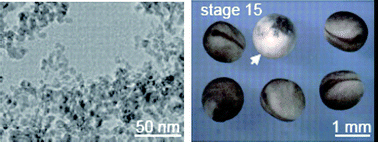Cellular and in vivo toxicity of functionalized nanodiamond in Xenopus embryos
Abstract
Recently, nanodiamond particles (

* Corresponding authors
a
Interdisciplinary Research Institute, USR-CNRS 3078, Parc de la Haute Borne, 50 avenue de Halley, Villeneuve d'Ascq, France
E-mail:
Lionel.Marcon@iri.univ-lille1.fr
Tel: +33 362 53 1723
b University of Lille1, Cité Scientifique Bât. SN3 Laboratoire de Régulation des Signaux de Division EA-4479, IFR147, Villeneuve d'Ascq, France
Recently, nanodiamond particles (

 Please wait while we load your content...
Something went wrong. Try again?
Please wait while we load your content...
Something went wrong. Try again?
L. Marcon, F. Riquet, D. Vicogne, S. Szunerits, J. Bodart and R. Boukherroub, J. Mater. Chem., 2010, 20, 8064 DOI: 10.1039/C0JM01570A
To request permission to reproduce material from this article, please go to the Copyright Clearance Center request page.
If you are an author contributing to an RSC publication, you do not need to request permission provided correct acknowledgement is given.
If you are the author of this article, you do not need to request permission to reproduce figures and diagrams provided correct acknowledgement is given. If you want to reproduce the whole article in a third-party publication (excluding your thesis/dissertation for which permission is not required) please go to the Copyright Clearance Center request page.
Read more about how to correctly acknowledge RSC content.
 Fetching data from CrossRef.
Fetching data from CrossRef.
This may take some time to load.
Loading related content
